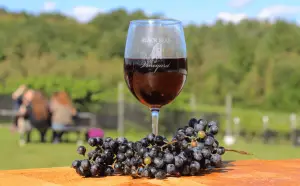New Hampshire homes ten main species of froggy friends, and in this article, we’ll introduce you to them all.
Some are very common and you’ll be quite likely to bump into them along your travels, others you’ll be very lucky to see in the flesh. Some have very sadly even made their way to the list of species of special concern.
According to the New Hampshire Wildlife Action Plan, three of these ten species are in great need of conservation and so if you are to spot or sight the Fowler’s toad, mink frog, or northern leopard frog, it needs to be reported.
Of course, if you don’t know exactly what you’re looking for it’s pretty hard to do so.
But throughout this article, we’ll take a look at the ten indigenous amphibians of New Hampshire, so you can learn a little more about them. So what are we waiting for? Let’s introduce you to the gang!
Meet The Gang – New Hampshire Frog Species
So, as I’ve mentioned there are ten froggy friends in total for you to meet. So let’s start our introductions.
1. Bullfrog – Lithobates Catesbeiana
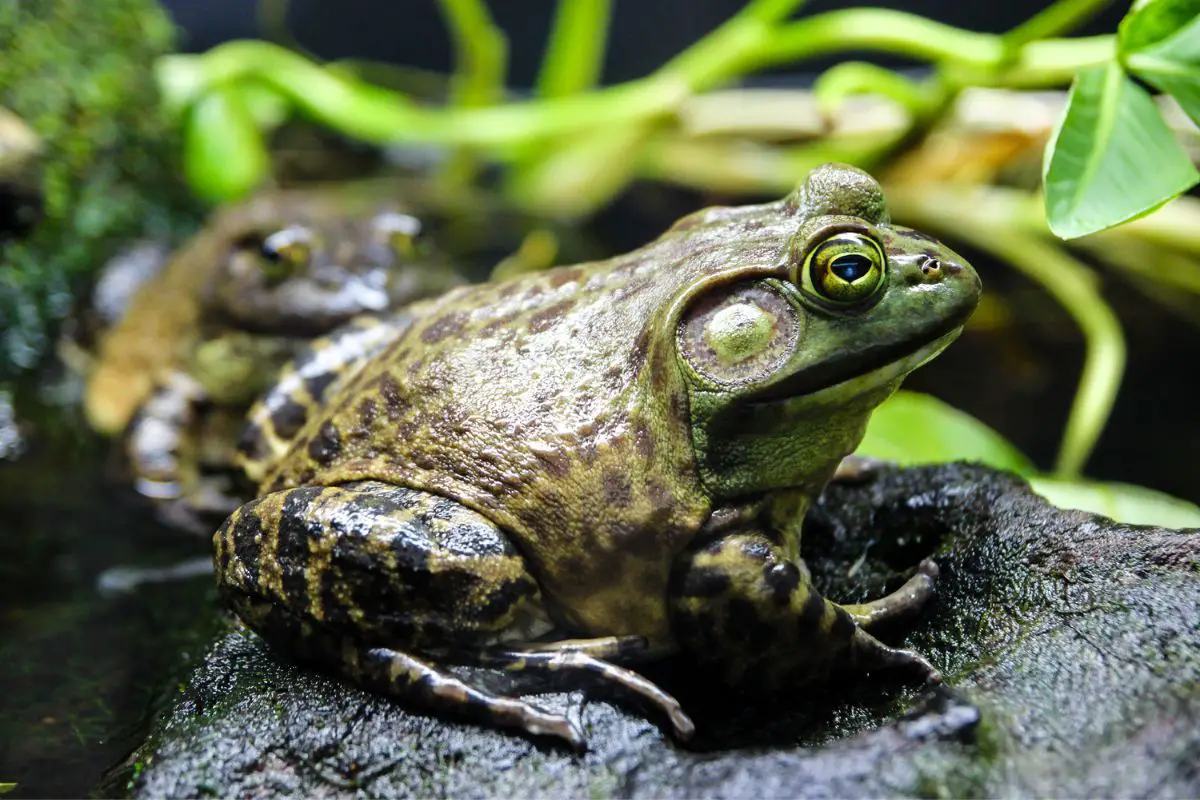
Here, you have the Bullfrog, he is nice and secure, widespread, and pretty common. It’s nice to know that this little one is not on the conservation list. So, you may even find this little fellow should you look hard enough.
This guy, the Bullfrog, is actually the biggest frog in all of North America. Typically, he’ll be anywhere between 3.5 and 6 inches. He’s usually green in color with a white belly.
Though he can range in color and sometimes be browny, bluey, or yellowish and his belly may sometimes have yellow or gray molting.
He tends to live near large bodies of water and so prefers to be near lakes, ponds, slow-running rivers, or bogs. He’ll also want some form of vegetation for cover.
But you’ll often find him chilling out on a somewhat submerged log near the edges of the water.
2. Wood Frog – Lithobates Sylvatica
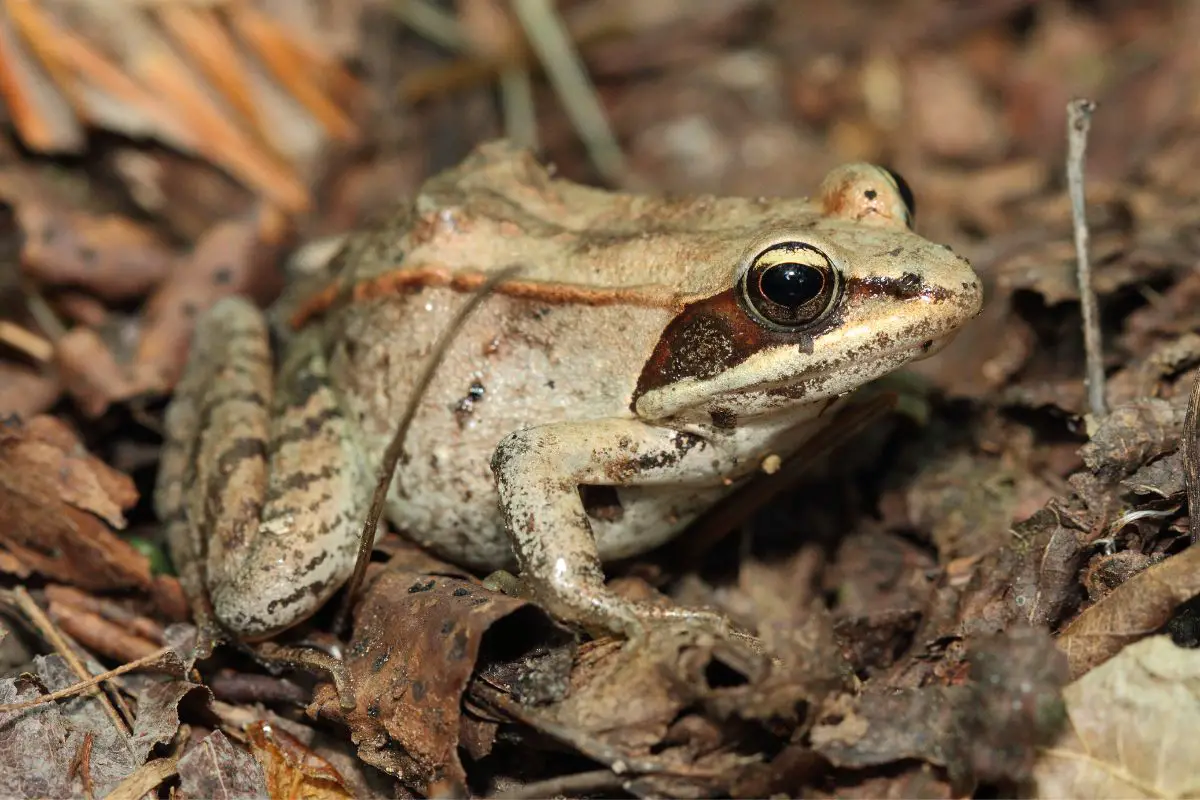
Here, you have the Wood Frog, he too is currently secure and fairly widespread and common. We have another species here that is not on the conservation list!
He is considerably smaller than the Bullfrog only growing to around 1-5 to 3 inches long. He tends to be a tan or brownish color, though sometimes he can be pink too.
You’ll notice that he’s a Wood Frog from the distinguishable dark mask that runs across the eye and ends at the eardrum. He will also have a stripe across his upper jaw and ridges across his back.
This little one likes to live on the ground and will usually set up his home in wooded areas. However, he can also be partial to the occasional pond or stream edge providing that it has lots of vegetation around the edges.
3. American Toad – Anaxyrus Americana
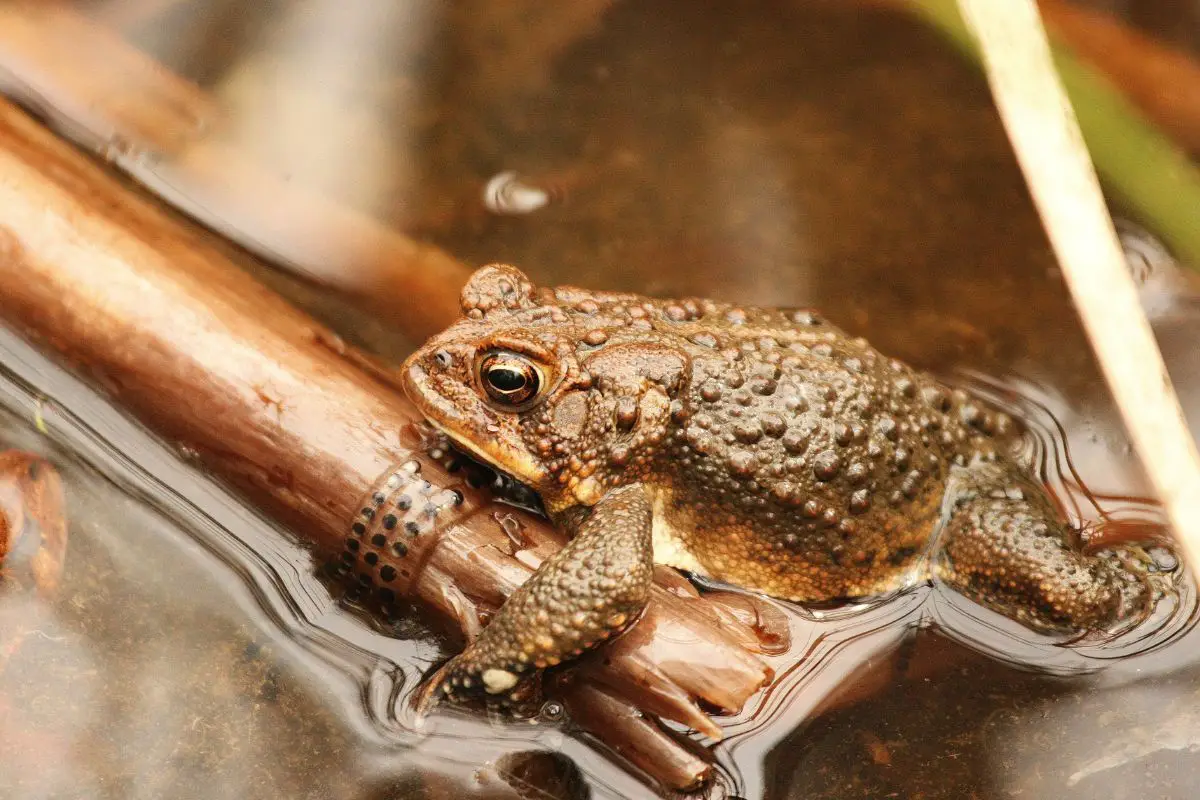
Say a big hello to the American Toad who is also secure, widespread, and fairly common. And great news – he is not in need of conservation!
He is only a teeny tiny bit bigger than the Wood Frog growing to be around 2-3.5 inches long.
He is typically brown, olive, red, or gray in color and has a couple of large warts in each dark spot on his body. His chest is also usually covered in a spotty dark pigment.
Now, he’s not too fussy about setting up camp. He will happily live in the forest and other open areas, in uplands, wetlands, and even sunny suburban backyards!
4. Green Frog – Lithobates Clamitans Melanota
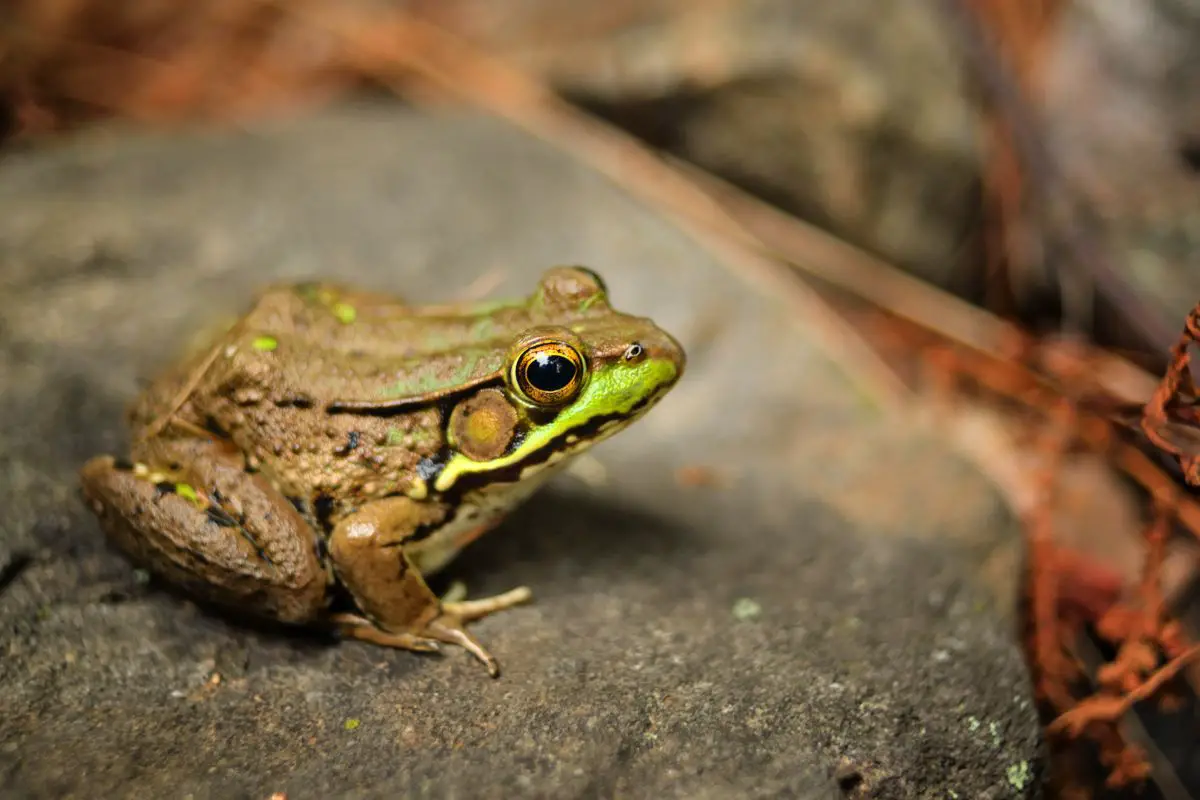
Our next friend, the Green Frog, also is common, widespread, secure, and free from conservation status – yay.
This little fella is around 2-4 inches long and is typically either green or brown in color. He has these very prominent ridges that can be found along the side of his back. These ridges stop just before you get to his groin.
He likes to live by water typically. Shorelines of ponds, streams, moist woodlands, and even ditches will make the perfect home for this little guy.
5. Mink Frog – Lithobates Septenrionali
Meet the Mink Frog, unfortunately, this little guy is currently on the Wildlife Action Plan Species In Greatest Need Of Conservation. This beautiful creature is actually pretty vulnerable to being lost forever.
He tends to grow to be just 1.5-3 inches. He is a greenish color but is usually marked with these stunning irregular spots of molting on his back and legs.
He doesn’t usually have ridges but can sometimes. He is very unique in a way too, because if you hold him there’s a good chance he will emit a very strong odor that is similar to rotten onions. How lovely.
He likes to live in cold water and is usually found in streams and pongs with shallow water and some vegetation. If you do find one of these rare frogs he’ll probably be chilling on a lily pad or a pickerelweed.
6. Fowler’s Toad – Anaxyrus Fowleri
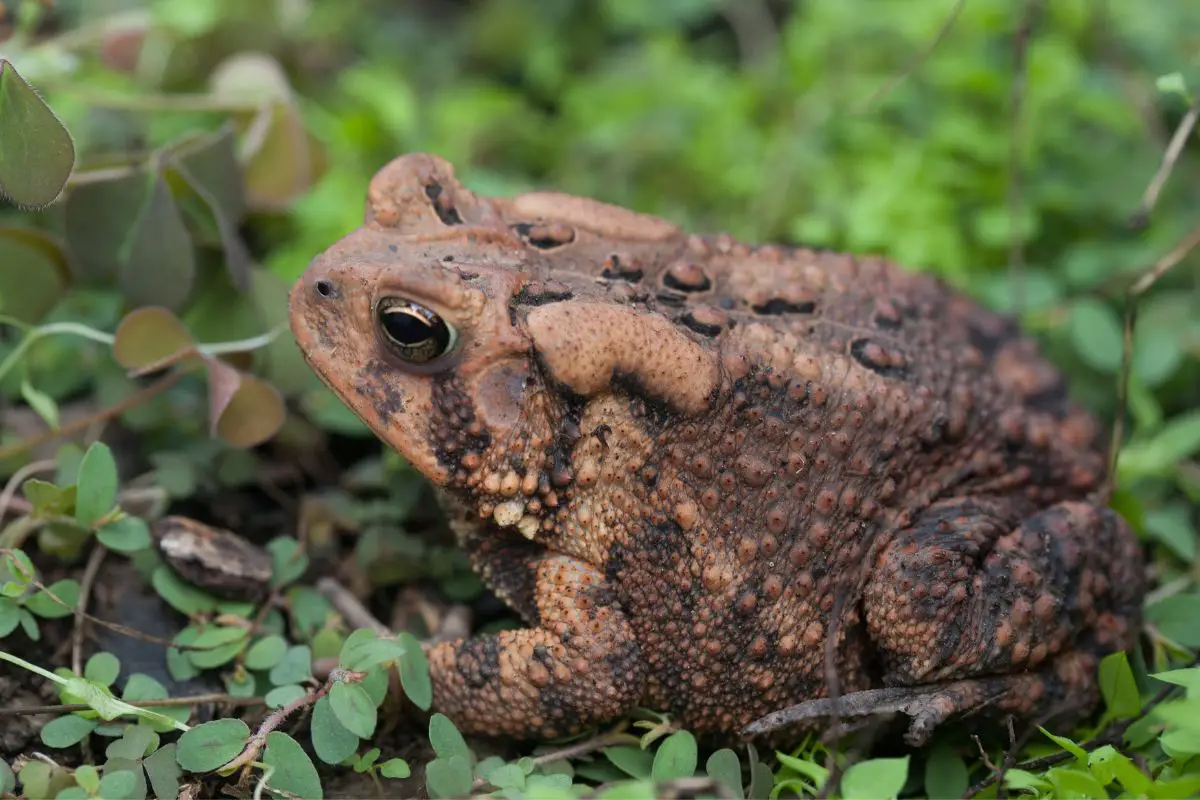
The Fowler’s toad has a threatened conservation status and so he needs to be protected where possible.
He tends to grow to about 2-3 inches overall. His most defining feature is that in each dark spot he’ll have more than 3 warts. He tends to be either brown or gray with a chest and belly that is unspotted like the rest of his body.
He likes his home to be a fairly sandy area. He likes river valleys, floodplains, and pine forests.
7. Northern Leopard Frog – Lithobates Pipiens

Sadly, this guy is a Species of Special Concern and is in Great Need Of Conservation. In fact, he’s not all that far away from extinction.
He tends to grow to be about 2-3.5 inches long and is brown or green in color. He has a couple of rows of irregular spots that have whitish borders around them.
He likes to live in slow streams, bogs, and marshes. Though when it gets a little sunnier he’ll make his way to moist meadows or wet fields.
8. Pickerel Frog – Lithobates Palustris
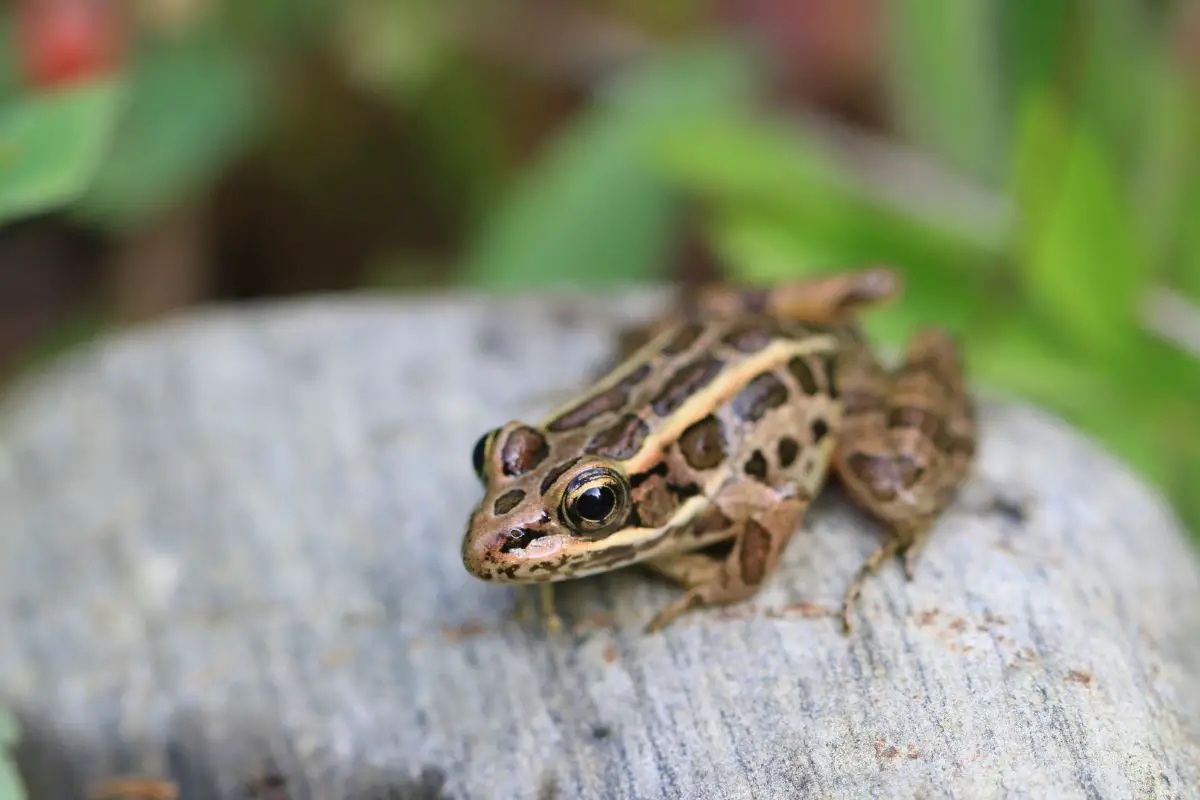
This little guy is not listed and is pretty common and widespread throughout New Hampshire!
He’s only a small boy being around 1.5-3 inches. He’s usually tan or green in color and has a few rows of square-shaped spots across his back and legs. Underneath he tends to be quite a bright yellow or orange color.
He likes to live near water that has access to dense vegetation that he can use as cover. The edge of a lake, pond, or stream is where you’ll usually find him.
9. Gray Tree Frog – Hyla Versicolor
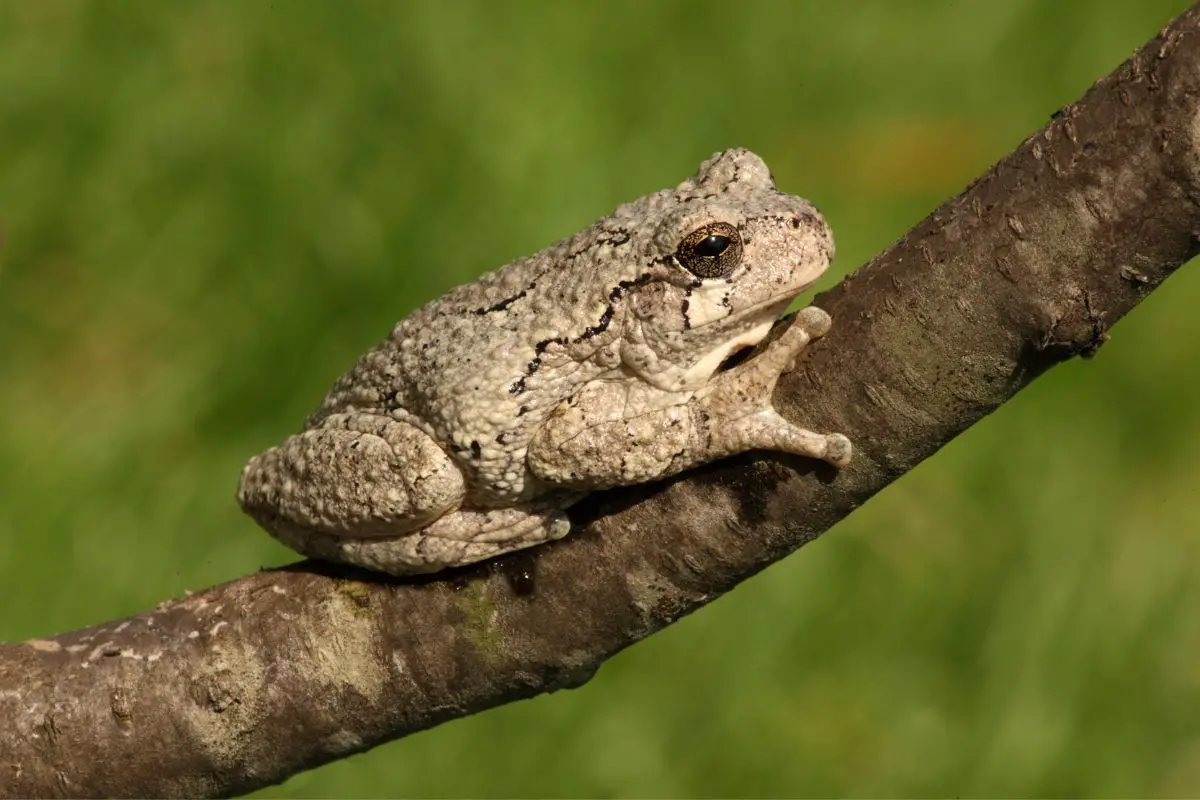
We have another friend here who is widespread, secure, and not listed in terms of conservation.
He is very little, indeed, at just 1-2 inches overall. He tends to be a browny-gray but he can sometimes be green too. He has quite bumpy skin with some dark spots.
He usually has a lighter spot just below his eye and his inner thighs are bright orange or yellow in color.
He likes to live in forested areas that have access to water. He’ll find shelter under loose tree bark or cavities in the tree. He is not a fan of the ground.
10. Spring Peeper – Pseudacris C. Crucifer
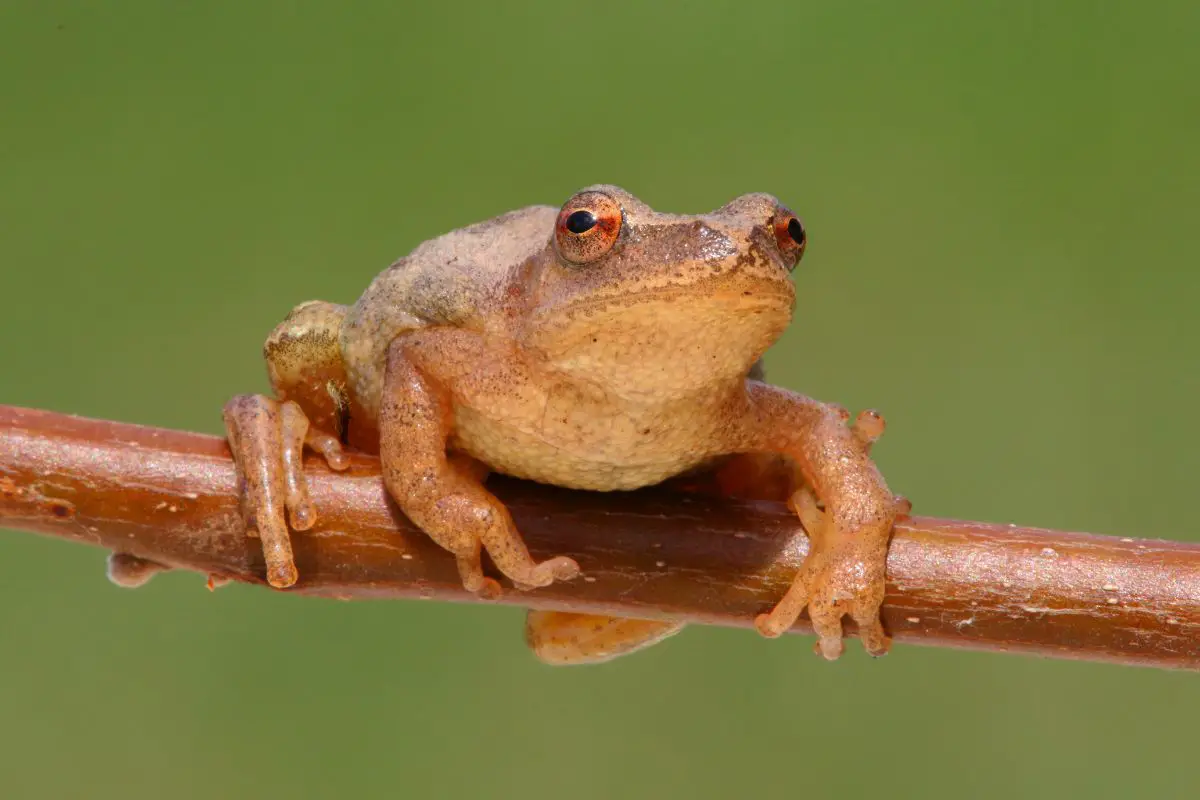
And last but not least, meet Spring Peeper. He is not listed under conservation and is pretty widespread and secure.
He is the littlest of the bunch at just 0.75-1.5 inches. He can be tan, brown, or gray and has a large black X across his back. He doesn’t like to be seen very often but you’ll often hear him late at night.
He likes to live in wet wooded areas close to swamps and ponds, though sometimes he will live in forests or meadows too.
Final Thoughts
And there you have it. That’s the frog gang. The 10 species that inhabit New Hampshire. Who was your favorite froggy?


